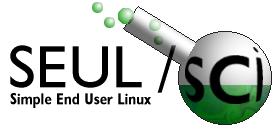
 |
Linux in science report #2 |
|---|
| Previous Report | Reports Page | Next Report |
|---|
GraceA long-time Linux user, Evgeny Stambulchik is currently maintaining the Grace GPL WYSIWYG plotting tool for X. Grace is a decendant of ACE/gr, also previously known as Xmgr. This is one of the first WYSIWYG graphing programs that I've seen so far for Linux, and it has a substantial range of graph types available, as well as annotation capabilities. It also supports a command line interface for batch-mode graphing. Grace's main site is http://plasma-gate.weizmann.ac.il/Grace/ and a tutorial and user manual are available. A gallery of graphs produced by Grace can be found at http://plasma-gate.weizmann.ac.il/Grace/gallery/ and the source and RPMs for the current version (5.0.5) are available from ftp://plasma-gate.weizmann.ac.il/pub/grace/
gASQLVivien Malerba has been working on a GPL'd GUI-based database administration tool for Linux. gASQL currently allows viewing of existing tables, as well as make some modifications. More importantly, his interface allows the admin to see relationships between tables and create simple SELECT queries to via a graphical interface. Vivien's approach to compatibility with different data types is to use plug-ins to wrap these various types. gASQL can be found at http://malerba.linuxave.net/, current source (0.5.2) can be found at http://malerba.linuxave.net/src/ and RPMs can be found at http://malerba.linuxave.net/bin/.
GNOME TranscriptIn addition to the SNAC project hosted at SEUL, Matias Mutchinick is also developing GNOME Transcript, a database client able to connect to different servers at the same time. It allows browsing and editing of table contents, and works with different database types via a plugin system. GNOME Transcript can be found at http://gtranscript.sourceforge.net/, and source, RPMs and SRPMs of the current version (0.2.0) are available at http://gtranscript.sourceforge.net/download.html
GULSome time ago, Nobert Immer created a library abstracting many 3d form manipulations called 'SNURBS.' He has since stepped back and reworked the entire library from scratch, into the Geometry Utility Library (GUL).From Norbert Irmer,
"Thanks for your friendly letter. I have disccontinued the work at "Snurbs", and started anew. In the new project I use a more generic approach (with C++ and templates), so that it's possible to instantiate the same algorithms for different data types. I also use now a Graph for storing, manipulating, and displaying data, which is a very flexible method. I wrote a Tour, in which I explain the available features and the syntax of the input files (with many nice screenshots :))" Norbert's site is located at http://gul.sourceforge.net/ and the 'tour' he alludes to is a comprehensive demonstration of the syntax for these functions. Current version: 0.3.
The OpenScience ProjectDoug Loss from the SEUL/edu project pointed me to the OpenScience project (http://www.openscience.org/). Their primary contribution appears to be a fairly well developed - but as yet fairly unpopulated - set of links. They are also hosting two Java-based chemistry apps, a molecular viewer (Jmol) and an editor (JChemPaint). I look forward to seeing this site develop over the next few months.
DEB Packages at the Pasteur InstituteThe Pasteur Institute in France maintains a set of packages of various biological software projects in deb format. The programs range from phylogenetic analysis to displaying DNA information http://www.pasteur.fr/recherche/unites/sis/debian/biology-en.html Links to the original project web sites are also present, so one can also obtain source code to build and hack on.
Scientific Library ProjectHerng-Jeng Jou, the founder and maintainer of the Scientific Applciations on Linux site (http://sal.kachinetech.com/) has set out a rather well-developed plan for the development of a comprehensive numerical library for Linux. From the web page at http://www.KachinaTech.COM/~hjjou/scilib/
Wouldn't it be nice if there exists a high quality scientific software library for Linux, Like IBM's ESSL, SGI's SGIMATH library... etc ? That is the goal of this this ambitious project --- to develop a commonly used scientific/numerical software library and program collections, for Linux platforms. This document sketches an early plan of the construction of Sci Lib, mainly for Linux. Since I am just a happy Linux user and happen to use some public domain numerical software, my knowledge and experience is pretty limited. Hence there is no doubt there are better approaches and thoughts to help this project get better. I would like to see how many people are interested and would like to help in this project. If you are interested, please drop me an e.mail to tell me what you think.
GSLIn a post to the SEUL/sci mailing list discussing the scientific programming libraries, Evgeny Stambulchik mentions the GNOME Scientific Library (GSL) project at http://sourceware.cygnus.com/gsl/ (GPL). From their web page:
The GNU Scientific Library (GSL) is a collection of routines for numerical computing. The routines are written from scratch by the GSL team in ANSI C, and are meant to present a modern Applications Programming Interface (API) for C programmers, while allowing wrappers to be written for very high level languages. The current release of GSL is 0.5, and the source can be found here.
SIMPLSIMPL is the Synchronous Interprocess Messaging Project for Linux, at http://www.holoweb.net/~simpl
From Robert Findlay, I noticed the launch of your new site with interest. Many of us at the SIMPL open source project (www.holoweb.net/~simpl) have been involved with engineering applications using the commercial QNX OS for many years. The SIMPL project aims to bring the Send/Receive/Reply messaging paradigm first popularized by such RTOS's as QNX to the Linux community. A substantial amount of work has already been done, in the form of a library of messaging primatives, and tools based on those messaging primatives. Base version: 1.2, "less tested version": 1.3.8.
-- Pete St. Onge (pete@seul.org) |
| Previous Report | Reports Page | Next Report |
|---|
| Please report any technical problems to webmaster@seul.org. |